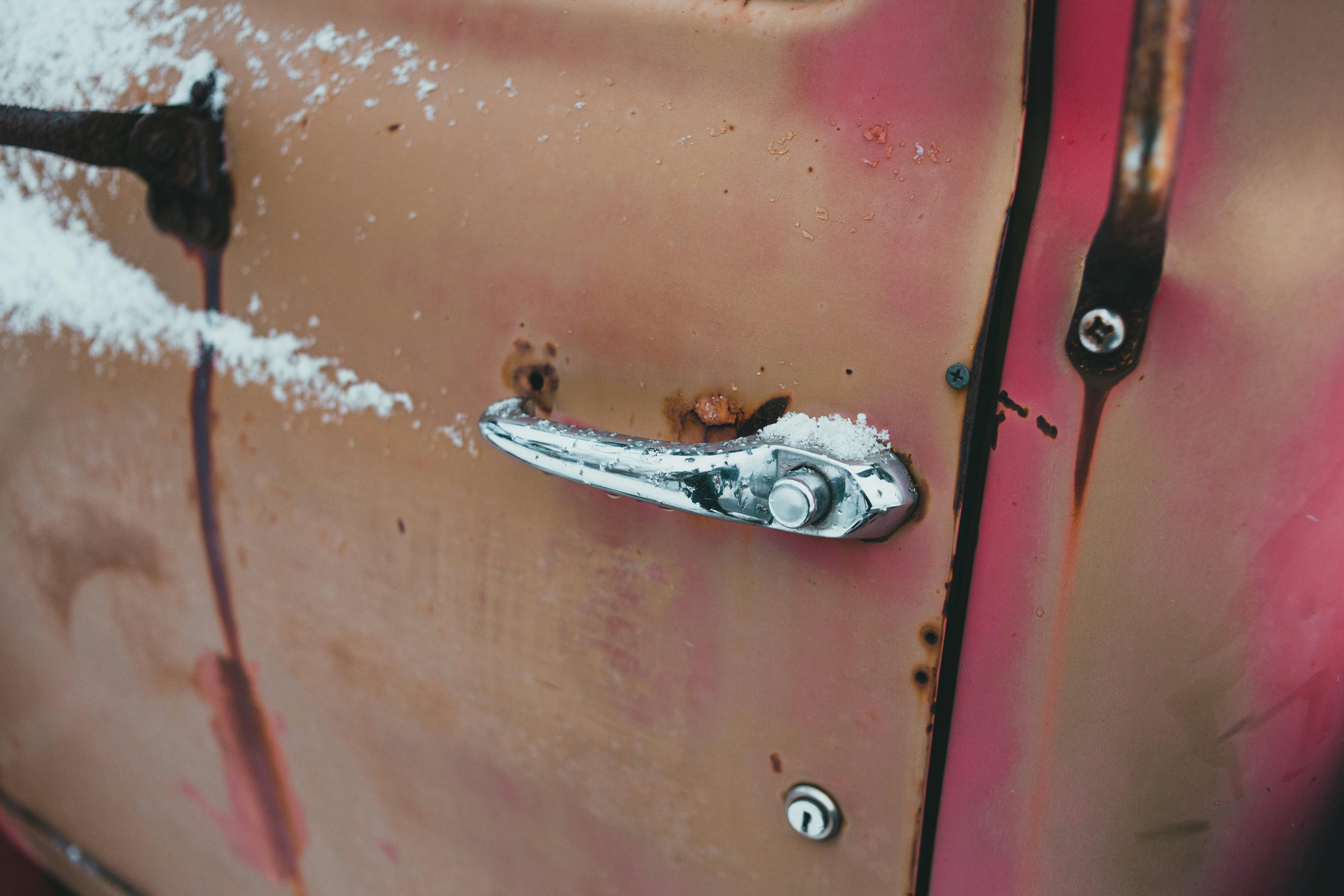As winter wraps Minnesota in its icy embrace, the simple act of unlocking your car door can turn into an unexpected challenge. Frozen car door locks are a common nuisance across the state’s chilly months, catching drivers off guard and causing frustrating delays. Understanding how to prevent this frosty hiccup not only saves time but also spares you from the cold morning battle at your vehicle. In this article, we’ll explore practical and effective ways to keep your car door locks from freezing, ensuring smooth access come rain, snow, or subzero temperatures.
Table of Contents
- Understanding Why Car Door Locks Freeze in Minnesota Winters
- Essential Tools and Products to Protect Your Locks
- Step-by-Step Preventive Measures Before the Cold Hits
- Quick Fixes When You Encounter a Frozen Lock
- Long-Term Maintenance Tips for Reliable Lock Performance
- Q&A
- In Retrospect

Understanding Why Car Door Locks Freeze in Minnesota Winters
When temperatures in Minnesota drop well below freezing, moisture trapped inside car door locks can turn into ice, effectively sealing your lock tight. This happens because the tiny gaps within the locking mechanism allow water vapor to seep in during humid or wet conditions. Once frozen, the lock’s internal components become immobile, preventing the key from turning and leaving drivers stranded in the cold. Additionally, salt and road grime may accelerate this freezing process by retaining moisture in the lock area.
Several factors contribute to this icy inconvenience, including:
- Humidity levels: High moisture content in the air increases the chance of ice formation inside locks.
- Temperature swings: Rapid fluctuations cause condensation, which then freezes.
- Exterior exposure: Locks on doors facing prevailing winds or rain accumulate more ice.
| Factor | Impact on Lock Freezing |
|---|---|
| Humidity | High moisture ingress |
| Temperature | Freezing condensation |
| Exposure | More ice accumulation |

Essential Tools and Products to Protect Your Locks
Keeping your car door locks in pristine condition during the icy months requires more than just luck; it demands the right equipment and maintenance products. Essential tools like a silicone-based lubricant can work wonders by creating a protective barrier inside the lock mechanism, preventing moisture from settling and freezing overnight. Avoid using oil-based lubricants as they tend to thicken in low temperatures, causing more harm than good. Additionally, a reliable lock de-icer spray, designed specifically for automotive locks, can be a lifesaver during emergency situations where locks are already frozen shut. These sprays rapidly melt the ice without damaging the internal lock components.
To complement these tools, keep a few practical items on hand to handle icy locks before they become a problem. Carry a small hand-held hairdryer or a portable heat pack to gently warm your locks, minimizing the risk of causing internal damage through forceful attempts to open them. A set of waterproof gloves is also invaluable, protecting your hands from winter’s chill while you work on the locks. For brand-new vehicles or after a detailed cleaning session, applying a protective wax coating around the lock area can prevent excessive moisture build-up. Below is a simple guide summarizing the must-have products and their key benefits:
| Product | Purpose | Key Benefit |
|---|---|---|
| Silicone-Based Lubricant | Lock protection and lubrication | Prevents moisture and freezing inside locks |
| Automotive Lock De-Icer Spray | Ice removal from locks | Melts ice quickly without damage |
| Handheld Hairdryer / Heat Pack | Warming frozen locks | Safe, controlled heat application |
| Waterproof Gloves | Hand protection and grip | Keeps hands warm and dry |
| Protective Wax Coating | Preventive moisture barrier | Reduces ice build-up around locks |

Step-by-Step Preventive Measures Before the Cold Hits
Before the harsh Minnesota winter sets in, taking proactive steps can spare you the frustration of frozen car door locks. Begin by applying a silicone-based lubricant directly into the lock cylinder; this creates a protective layer that repels moisture and prevents ice formation. Pair this with a small dab of graphite powder, known for its long-lasting lubrication without attracting dirt. Additionally, consider installing a weather-resistant lock cover to shield the mechanism from snow and ice buildup.
Incorporate these smart habits into your winter routine to keep your locks operable and smooth:
- Park in a garage or under a sheltered area whenever possible to minimize exposure to freezing elements.
- Regularly clear off snow accumulation around the door handles and locks after each snowfall.
- Use a de-icer spray as an emergency option and keep a small bottle in your glove compartment.
- Ensure door seals are intact and replace any worn rubber strips to prevent moisture ingress.
| Preventive Measure | Benefit |
|---|---|
| Silicone Lubricant | Repels moisture and prevents ice build-up |
| Graphite Powder | Long-lasting lubrication without dirt attraction |
| Lock Covers | Protects lock from direct exposure to elements |
| Regular Snow Clearance | Prevents moisture buildup and freezing |

Quick Fixes When You Encounter a Frozen Lock
When you find yourself staring at a lock that refuses to budge on a frigid morning, don’t panic. Start by warming the key gently with your hands or a cloth. Avoid using any flame directly on the key or lock to prevent damage. Once warmed, carefully insert the key and wiggle it slightly to help break the ice inside the mechanism. Another effective tactic is to use a lock de-icer spray-these products are specially formulated to melt ice quickly without harming the lock’s internal components.
Alternatively, you can try some household remedies if a commercial de-icer isn’t at hand. Applying a small amount of rubbing alcohol or hand sanitizer on the key can help since these liquids have a lower freezing point and assist in melting ice inside the lock. Remember to keep some lubricant handy; lubricants like graphite or silicone spray not only help in smooth operation but also create a barrier that discourages future freezing. Below is a quick reference table with essential tips for unfreezing a lock:
| Method | How It Works | Precautions |
|---|---|---|
| Warm the key | Use body heat or warm cloth | Avoid open flames |
| Lock de-icer spray | Melts ice quickly | Use as directed |
| Rubbing alcohol | Melts ice inside lock | Apply sparingly |
| Lubricant spray | Prevents refreezing | Use graphite or silicone |

Long-Term Maintenance Tips for Reliable Lock Performance
Ensuring your car door locks operate smoothly throughout Minnesota’s icy winters requires consistent care and smart habits. Start by lubricating your locks with a silicone-based spray before the first frost arrives; this creates a protective barrier against moisture and prevents ice build-up. Avoid using oil-based lubricants, as they can attract dirt and grime, causing more harm than good. Additionally, periodically clean the lock cylinders with compressed air or a small brush to remove dust and debris that might trap moisture and lead to freezing.
Paying attention to your vehicle’s overall weatherproofing can also improve lock reliability. Check door seals regularly for cracks or wear, as compromised seals allow water to seep inside and freeze overnight. Consider investing in a lock cover or silicone keyhole protector to shield the area during heavy snowfalls. To keep your locks in optimal condition, follow these basic maintenance steps:
- Winterize locks before the cold season hits
- Keep lock cylinders clean with compressed air
- Inspect and maintain door seals to prevent moisture intrusion
- Use dedicated lock lubricants to reduce friction and ice formation
| Maintenance Action | Recommended Frequency | Benefit |
|---|---|---|
| Apply Silicone Lubricant | Biannually (Pre- and Post-Winter) | Prevents ice build-up & ease lock operation |
| Clean Lock Cylinders | Monthly during winter | Removes debris & reduces moisture retention |
| Inspect Door Seals | Quarterly | Prevents water seepage & lock freezing |
| Install Keyhole Covers | Before heavy snowfalls | Physical barrier against moisture |
Q&A
Q&A: How to Prevent Frozen Car Door Locks in Minnesota
Q1: Why do car door locks freeze in Minnesota winters?
A1: Minnesota’s harsh winter temperatures cause moisture inside the lock mechanism to freeze, creating ice buildup that blocks the key or remote from operating the lock. The combination of cold air and humidity is the main culprit behind frozen locks.
Q2: What is the first step to prevent frozen car door locks?
A2: Regularly lubricate your car door locks with a silicone-based or graphite lubricant before winter arrives. This creates a water-resistant barrier inside the lock, reducing moisture buildup and preventing freezing.
Q3: Can I use household items to thaw a frozen lock?
A3: Yes, with caution. Warm water can melt ice, but it’s risky because the water might refreeze quickly in Minnesota’s cold. A safer option is to use a lock de-icer spray or gently heat your car key with a lighter before inserting it into the lock, which melts the ice gradually.
Q4: Should I cover my car locks during a Minnesota winter?
A4: Absolutely. Using lock covers or weatherproof caps can shield the lock cylinder from snow, sleet, and humidity, minimizing ice formation. Even simply parking your car in a garage or sheltered area can help.
Q5: Does using remote keyless entry help with frozen locks?
A5: To some extent, yes. Remote keyless entry can reduce the need to insert a key into the lock, which might fail if frozen. However, if the door handles or mechanisms freeze shut, remote entry might also pose challenges.
Q6: Are there any long-term solutions for preventing frozen locks?
A6: Besides regular lubrication and protection, consider upgrading to frost-resistant locks or installing heated door locks if your vehicle supports them. Routine maintenance and prompt attention to moisture help ensure lock longevity through Minnesota’s frozen months.
Q7: What should I avoid when trying to fix frozen locks?
A7: Avoid forcefully turning the key or using sharp objects to break the ice, as you can damage the lock mechanism. Also, don’t pour boiling water on the lock-it melts ice but can warp metal parts and cause more damage once it refreezes.
Q8: How can I perform quick daily checks to prevent lock freezing?
A8: Gently wipe the locks dry after snow or rain exposure, and apply a quick spray of de-icer or lubricant when temperatures drop sharply. Keeping moisture out daily is key to prevention.
Q9: Does using anti-freeze sprays in the lock cause damage?
A9: Properly formulated lock de-icers are designed not to harm lock internals and can be very effective. However, avoid using automotive antifreeze products not made for locks, as they can cause corrosion or clogging.
Q10: What’s the best advice for Minnesota drivers facing frozen car locks?
A10: Preparation is your best defense-start lubricating locks before winter hits, keep your car sheltered whenever possible, and have de-icer products on hand. When trouble strikes, be patient and use gentle, safe methods to thaw locks rather than force. Staying ahead of the freeze keeps your doors ready to open all season long.
In Retrospect
As the icy Minnesota winters roll in, frozen car door locks become an unavoidable frosty foe. Yet, with a little preparation and the right techniques, you can keep your locks moving smoothly and avoid those frustrating freeze-ups. Whether it’s applying lubricant before the first frost, using protective covers, or keeping a handy de-icer nearby, these simple steps can turn winter’s chill into just another season, not a daily hassle. Stay warm, stay prepared, and let your car doors open effortlessly no matter how cold it gets outside.





